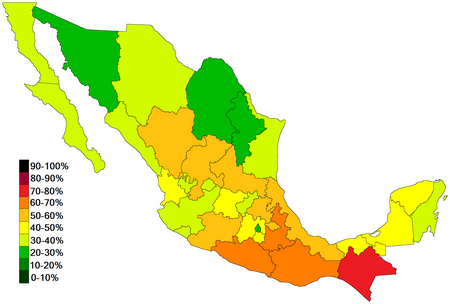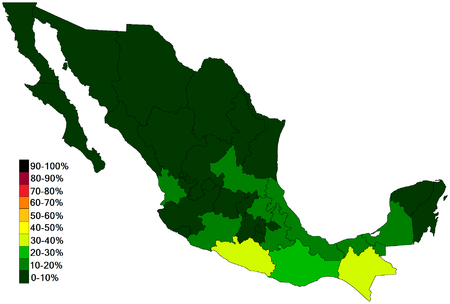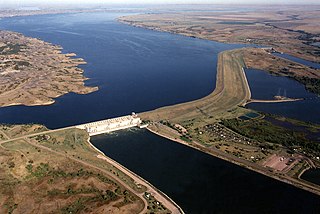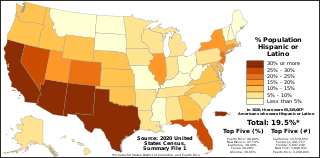This is a list of the 32 federal entities (31 states and Mexico City) of Mexico by poverty rate in 2012.
Contents


This is a list of the 32 federal entities (31 states and Mexico City) of Mexico by poverty rate in 2012.


This list includes both moderate poverty and extreme poverty rates. Percentages appear very high as a result.
| Rank | State | Poverty Rate (2012) [1] | Poverty Rate (2010) [2] |
|---|---|---|---|
| 1 | 74.7% | 78.5% | |
| 2 | 69.7% | 67.6% | |
| 3 | 64.5% | 61.5% | |
| 4 | 61.9% | 67.0% | |
| 5 | 57.9% | 60.3% | |
| 6 | 54.4% | 54.7% | |
| 7 | 54.2% | 60.2% | |
| 8 | 52.8% | 54.7% | |
| 9 | 52.6% | 57.6% | |
| 10 | 50.5% | 52.4% | |
| 11 | 50.1% | 51.6% | |
| 12 | 49.7% | 57.1% | |
| 13 | 48.9% | 48.3% | |
| 14 | 47.6% | 41.4% | |
| - | 45.5% | 46.1% | |
| 15 | 45.5% | 43.2% | |
| 16 | 45.3% | 42.9% | |
| 17 | 44.7% | 50.5% | |
| 18 | 44.5% | 48.5% | |
| 19 | 39.8% | 37.0% | |
| 20 | 38.8% | 34.6% | |
| 21 | 38.4% | 39.0% | |
| 22 | 37.8% | 38.1% | |
| 23 | 36.9% | 41.4% | |
| 24 | 36.3% | 36.7% | |
| 25 | 35.3% | 38.8% | |
| 26 | 34.4% | 34.7% | |
| 27 | 31.0% | 31.0% | |
| 28 | 30.2% | 31.5% | |
| 29 | 29.1% | 33.1% | |
| 30 | 28.9% | 28.5% | |
| 31 | 27.9% | 27.8% | |
| 32 | 23.2% | 21.0% |
General:

Central America is a subregion of the Americas. Its boundaries are defined as bordering the United States to the north, Colombia to the south, the Caribbean Sea to the east, and the Pacific Ocean to the west. Central America consists of seven countries: Belize, Costa Rica, El Salvador, Guatemala, Honduras, Nicaragua, and Panama. Within Central America is the Mesoamerican biodiversity hotspot, which extends from northern Guatemala to central Panama. Due to the presence of several active geologic faults and the Central America Volcanic Arc, there is a high amount of seismic activity in the region, such as volcanic eruptions and earthquakes which has resulted in death, injury, and property damage.

The economy of Mexico is a developing mixed-market economy. It is the 15th largest in the world in nominal GDP terms and the 13th largest by purchasing power parity, according to the International Monetary Fund. Since the 1994 crisis, administrations have improved the country's macroeconomic fundamentals. Mexico was not significantly influenced by the 2002 South American crisis, and maintained positive, although low, rates of growth after a brief period of stagnation in 2001. However, Mexico was one of the Latin American nations most affected by the 2008 recession with its gross domestic product contracting by more than 6% in that year.

The United States is a highly developed mixed-market economy and has the world's largest nominal GDP and net wealth. It has the second-largest by purchasing power parity (PPP) behind China. It has the world's seventh-highest per capita GDP (nominal) and the eighth-highest per capita GDP (PPP) as of 2022. US share of Global economy is 15.78% in PPP terms in 2022. The United States has the most technologically powerful and innovative economy in the world. Its firms are at or near the forefront in technological advances, especially in artificial intelligence, computers, pharmaceuticals, and medical, aerospace, and military equipment. The U.S. dollar is the currency of record most used in international transactions and is the world's foremost reserve currency, backed by the nation’s massive economy, stable government, extensive natural resources, highly advanced military, its role as the reference standard for the petrodollar system, and its linked eurodollar and large U.S. treasuries market. Several countries use it as their official currency and in others it is the de facto currency. The largest U.S. trading partners are China, the European Union, Canada, Mexico, India, Japan, South Korea, the United Kingdom, and Taiwan. The U.S. is the world's largest importer and second-largest exporter. It has free trade agreements with several countries, including the USMCA, Australia, South Korea, Switzerland, Israel and several others that are in effect or under negotiation.

Buffalo County is a county in the U.S. state of South Dakota. As of the 2020 census, the population was 1,948. Its county seat is Gann Valley which, at 14 people, is the least populous county seat in the United States. The county was created in 1864, and was organized in 1871 as part of the Dakota Territory.

Los Alamos County is a county in the U.S. state of New Mexico. As of the 2010 census, the population was 17,950. The smallest county by area in the state, Los Alamos County was formerly administered exclusively by the U.S. federal government during the Manhattan Project, but it now has equal status to New Mexico's other counties. The county has two census-designated places: Los Alamos and White Rock.

Hidalgo County is the southernmost county of the U.S. state of New Mexico. As of the 2010 census, the population was 4,894. The county seat and largest city is Lordsburg. A bill creating Hidalgo from the southern part of Grant County was passed on February 25, 1919, taking effect at the beginning of 1920. The county was named for the town north of Mexico City where the Treaty of Guadalupe Hidalgo was signed, which in turn was named for Miguel Hidalgo y Costilla, the priest who is known as the "Father of Mexican Independence." The county is located on the Mexico–United States border.

The poverty threshold, poverty limit, poverty line or breadline is the minimum level of income deemed adequate in a particular country. The poverty line is usually calculated by estimating the total cost of one year's worth of necessities for the average adult. The cost of housing, such as the rent for an apartment, usually makes up the largest proportion of this estimate, so economists track the real estate market and other housing cost indicators as a major influence on the poverty line. Individual factors are often used to account for various circumstances, such as whether one is a parent, elderly, a child, married, etc. The poverty threshold may be adjusted annually. In practice, like the definition of poverty, the official or common understanding of the poverty line is significantly higher in developed countries than in developing countries.

Mexico, officially the United Mexican States, is a country in the southern portion of North America. It is bordered to the north by the United States; to the south and west by the Pacific Ocean; to the southeast by Guatemala, Belize, and the Caribbean Sea; and to the east by the Gulf of Mexico. Mexico covers 1,972,550 square kilometers (761,610 sq mi), making it the world's 13th-largest country by area; with approximately 126,014,024 inhabitants, it is the 10th-most-populous country and has the most Spanish-speakers. Mexico is organized as a federal republic comprising 31 states and Mexico City, its capital. Other major urban areas include Monterrey, Guadalajara, Puebla, Toluca, Tijuana, Ciudad Juárez, and León.

India is a developing nation. Although its economy is growing, poverty is still a major challenge. However, poverty is on the decline in India. According to an International Monetary Fund paper, extreme poverty, defined by the World Bank as living on US$1.9 or less in purchasing power parity (PPP) terms, in India was as low as 0.8% in 2019 and the country managed to keep it at that level in 2020 despite the unprecedented COVID-19 outbreak. According to World Bank, extreme poverty has reduced by 12.3% between 2011 and 2019 from 22.5% in 2011 to 10.2% in 2019. A working paper of the bank said rural poverty declined from 26.3% in 2011 to 11.6% in 2019. The decline in urban areas was from 14.2% to 6.3% in the same period.The poverty level in rural and urban areas went down by 14.7 and 7.9 percentage points, respectively. According to United Nations Development Programme administrator Achim Steiner, India lifted 271 million people out of extreme poverty in a 10-year time period from 2005–2006 to 2015–2016. A 2020 study from the World Economic Forum found "Some 220 million Indians sustained on an expenditure level of less than Rs 32 / day—the poverty line for rural India—by the last headcount of the poor in India in 2013."

The demographics of Hispanic and Latino Americans depict a population that is the second-largest ethnic group in the United States, 62 million people or 18.7% of the national population.
Israel's standard of living is significantly higher than all of the other countries in the region and equal to Western European countries, and is comparable to that of other highly developed countries. Israel was ranked 19th out of 189 countries on the 2019 UN Human Development Index, indicating "very high" development. It is considered a high-income country by the World Bank. Israel also has a very high life expectancy at birth.

In demographics, the world population is the total number of humans currently living. It was estimated by the United Nations to have exceeded 8 billion in November 2022. It took over 200,000 years of human prehistory and history for the human population to reach one billion and only 219 years more to reach 8 billion.

In the United States, poverty has both social and political implications. In 2020, there were 37.2 million people in poverty. Some of the many causes include income inequality, inflation, unemployment, debt traps and poor education. The vast majority of people living in poverty are less educated and end up in a state of unemployment; higher incarceration rates have also been observed. Although the US is a relatively wealthy country by international standards, poverty has consistently been present throughout the United States, along with efforts to alleviate it, from New Deal-era legislation during the Great Depression, to the national war on poverty in the 1960s and poverty alleviation efforts during the 2008 Great Recession.

Modern social statistics of Native Americans serve as defining characteristics of Native American life, and can be compared to the average United States citizens’ social statistics. Areas from their demographics and economy to health standards, drug and alcohol use, and land use and ownership all lead to a better understanding of Native American life. Health standards for Native Americans have notable disparities from that of all United States racial and ethnic groups. They have higher rates of disease, higher death rates, and a lack of medical coverage.

Poverty in Mexico deals with the incidence of poverty in Mexico and its measurement. It is measured based on social development laws in the country and under parameters such as nutrition, clean water, shelter, education, health care, social security, quality and availability of basic services in households, income and social cohesion. It is divided in two categories: Moderate poverty and Extreme poverty.